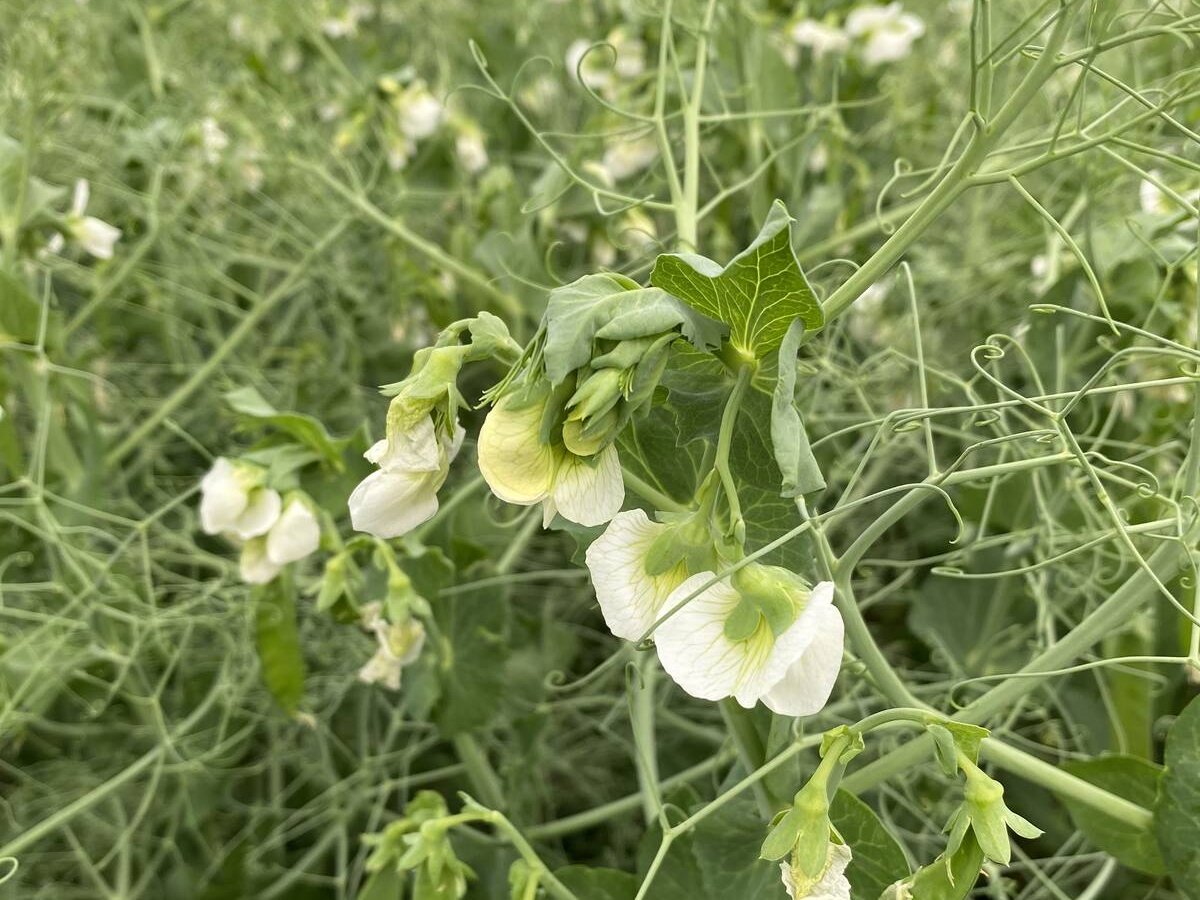WINNIPEG — Surveys and anecdotal evidence suggest 80 percent of Manitoba farmers use neonicotinoid seed treatments when growing soybeans.
The province’s entomologist is concerned by that figure because less than 20 percent of soybean crops in the province actually require an insecticidal seed treatment.
John Gavloski said there are geographic pockets, such as Niverville, Teulon, Steinbach and Dauphin, where fields have wireworms and neonics could be useful for soybeans.
However, those fields are the exception.
“Those are pockets and it’s certainly not 80 percent of our acres. It’s going to be much less than that … anywhere from five to 20 percent, 20 being on the very high end,” he said at the Crop Connect conference, which was held in Winnipeg Feb. 17-18.
Read Also

India slaps 30 per cent import duty on yellow peas
India has imposed a 30 per cent duty on yellow pea imports with a bill of lading date on or after Nov. 1, 2025.
“The other 60 to 70 percent (of growers) that have neonic and (don’t) have the wireworm issues, it’s really hit and miss whether they’re going to get any benefit.”
Jeanette Gaultier, a Manitoba Agriculture pesticide specialist, said producers might be planting soybeans with a neonicotinoid out of habit because it’s been standard practice for years.
Neonics are applied to almost all corn and canola seed in North America and a portion of soybean seeds.
Recent studies, including a U.S. Environmental Protection Agency paper from last fall, indicate that insecticide seed treatments offer almost no economic benefit for soybeans.
“This is because the limited period of (neonic) bioactivity in soybeans (three to four weeks) does not usually align with periods of soybean aphid presence/activity,” the EPA said. “Similarly, neonicotinoid seed treatments are not effective in controlling bean leaf beetles as this pest occurs too late in the season.”
Gaultier is troubled by industry advertising that encourages soybean growers to use neonics prophylactically.
Bayer and Syngenta, which make neonics, have previously promoted neonics as insect control and a way to mitigate foliar applications of insecticides.
More recently, Syngenta has emphasized another attribute of its neonic seed treatment thiamethoxam, sold under the brand name CruiserMaxx.
Syngenta says on its website that thiamethoxam provides a “vigour trigger” effect, boosting plants’ tolerance of stressful conditions early in the growing season. That vigour enhances emergence, improves plant stand and helps the crop reach its full yield potential.
Similarly, Bayer says imidacloprid, one of its neonics, provides a stress shield for crops under duress. They claim it promotes superior root growth, improved vigour and increased yield.
Gaultier shook her head when asked about the claims and said farmers should use insecticides to control pests.
Applying an insecticide for another purpose is a mistake.
“At MAFRD (Manitoba Agriculture), we refer to that as prophylactic use. We recommend against that,” she said. “We’re always recommending … that you’re using that pesticide when it’s needed, when the pest is present.”
Gavloski said augmented plant vigour related to thiamethoxam is real, but it occurs only under extreme conditions, such as a dry spring.
“There can be a benefit if you get those stressful conditions. If not, there really isn’t and you’re paying extra money for something that’s really providing no benefit,” Gavloski said.
“I wouldn’t mind the vigour trigger being advertised so much if the companies were honest enough to say it occurs under certain conditions…. A lot of the ads make it sound like it’s a given, which it’s not and they know that. The way it’s advertised, it makes it sound like you’re going to get it regardless.”
Gavloski said insecticides should be marketed as insecticides.
“It would be nice if the main purpose, insect control, was a bit higher profile in the ads. Sometimes you don’t even see the word wireworm. You would see at the very bottom that (the product) also controls insects.”
Gaultier said it’s not good stewardship to tell growers to use a neonic whether pests are present or not.
“You’re putting that selection pressure on (the insects) and increasing the risk for (insecticide) resistance.”
A Syngenta spokesperson said farmers have choices when it comes to seed treatments. Growers who don’t need an insecticide can buy a fungicide-only product.
“Our experience has been that growers will use the products that they see value in and benefit their crop production,” he said.
“Seed applied insecticides with thiamethoxam protect the seed and seedlings from pests, ensuring that plants get off to a healthy, vigorous start, which ultimately contributes to the quality and yield potential of the crop.
He said seed applied insecticides require less active ingredient per acre than foliar and soil applied pesticides.
They also provide “protection from increased pest pressure associated with a range of agronomic practices including reduced/no-till field conditions (and) they also allow plants to deal with abiotic stresses such as cool soil temperatures or dry conditions at planting.”















